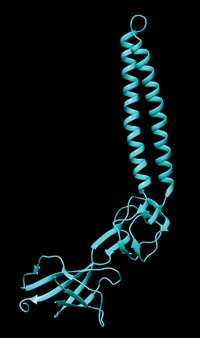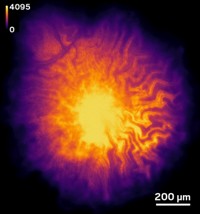Advertisement
Grab your lab coat. Let's get started
Welcome!
Welcome!
Create an account below to get 6 C&EN articles per month, receive newsletters and more - all free.
It seems this is your first time logging in online. Please enter the following information to continue.
As an ACS member you automatically get access to this site. All we need is few more details to create your reading experience.
Not you? Sign in with a different account.
Not you? Sign in with a different account.
ERROR 1
ERROR 1
ERROR 2
ERROR 2
ERROR 2
ERROR 2
ERROR 2
Password and Confirm password must match.
If you have an ACS member number, please enter it here so we can link this account to your membership. (optional)
ERROR 2
ACS values your privacy. By submitting your information, you are gaining access to C&EN and subscribing to our weekly newsletter. We use the information you provide to make your reading experience better, and we will never sell your data to third party members.
Biological Chemistry
Connecting Bacteria
Microbiology: Nanotube links between cells foster exchange of genes and proteins
by Sarah Everts
February 21, 2011
| A version of this story appeared in
Volume 89, Issue 8

Bacteria build nanotube channels to share the innermost contents of their cells with individuals of the same or different species, researchers in Israel have found (Cell, DOI: 10.1016/j.cell.2011.01.015). The newly discovered form of bacterial communication may shed light on interspecies collaboration.
Forming in just a few minutes, the nanotube highways, which range from 30 to 130 nm in diameter, may help explain how bacteria of many different species coordinate community life in biofilms, says Sigal Ben-Yehuda, a microbiologist at Hebrew University of Jerusalem who led the research. Ben-Yehuda’s team captured images of the nanotube highways with fluorescence and scanning electron microscopy. The researchers also showed that bacteria connected by such channels could share genes and proteins, including those involved in antibiotic resistance.
“Bacteria can use the nanotubes to acquire new features from a neighbor—or maybe kill it,” Ben-Yehuda says. “At this point, we don’t know if there is a gating mechanism in place to control the flow or whether it is an open exchange of cytoplasmic contents,” she adds. The team is working now to narrow down the composition of the nanotube; they have a hint that it involves a membrane because membrane-busting chemical detergents disrupt the channel.
Bacteria are known to communicate by releasing small molecules or vesicles packed with chemical messages. They also construct elaborate protein machines to inject cargo, such as genes, into neighboring cells. But the “intimate interactions” provided by the nanotube channels are “an exciting new discovery,” cell biologists Jeffrey W. Schertzer and Marvin Whiteley of the University of Texas, Austin, write in a commentary about the work.
Certain plant and mammalian cells share their contents with neighbors through microscopic channels known as plasmodesmata and gap junctions, Ben-Yehuda notes. Some mammalian cells also build nanotubes that are analogous to the newly discovered bacterial channels.






Join the conversation
Contact the reporter
Submit a Letter to the Editor for publication
Engage with us on Twitter